What Is It Like to Live Alone on an Island for 30 Years?
Mauro Morandi has been the sole resident of Budelli, Italy, for decades, but that time may be coming to an end.
In 1989, Mauro Morandi set sail from Gallipoli, in Apulia, southern Italy, with the goal of reaching Polynesia. “I had enough of society,” the now 79-year-old Morandi says. “I was dreaming of a desert island in the Pacific where to start life anew.”
A few days after leaving, he landed on Budelli, less than a square mile in Italy’s Maddalena archipelago, in the Strait of Bonifacio between Sardinia and Corsica.“There were a lot of tourists, so I thought I could make some money taking them around the islands,” he says. “I owed some money to the bank.”
At the time, Budelli was owned by a property firm that employed a caretaker and his wife to watch over it. Morandi met the couple and started to wonder if he could take over for them. “He told me his wife did not like the lifestyle,” Morandi says. “Some find it too crowded in the summer and too lonely during winter, but I do not mind.”
A few weeks later, he had the job. He has been living and working on Budelli as its sole official guardian ever since. But now his cherished autonomy may be coming to an end. “It’s been two years that I don’t leave Budelli, as I am not sure they would let me go back,” he says, concern in his voice.
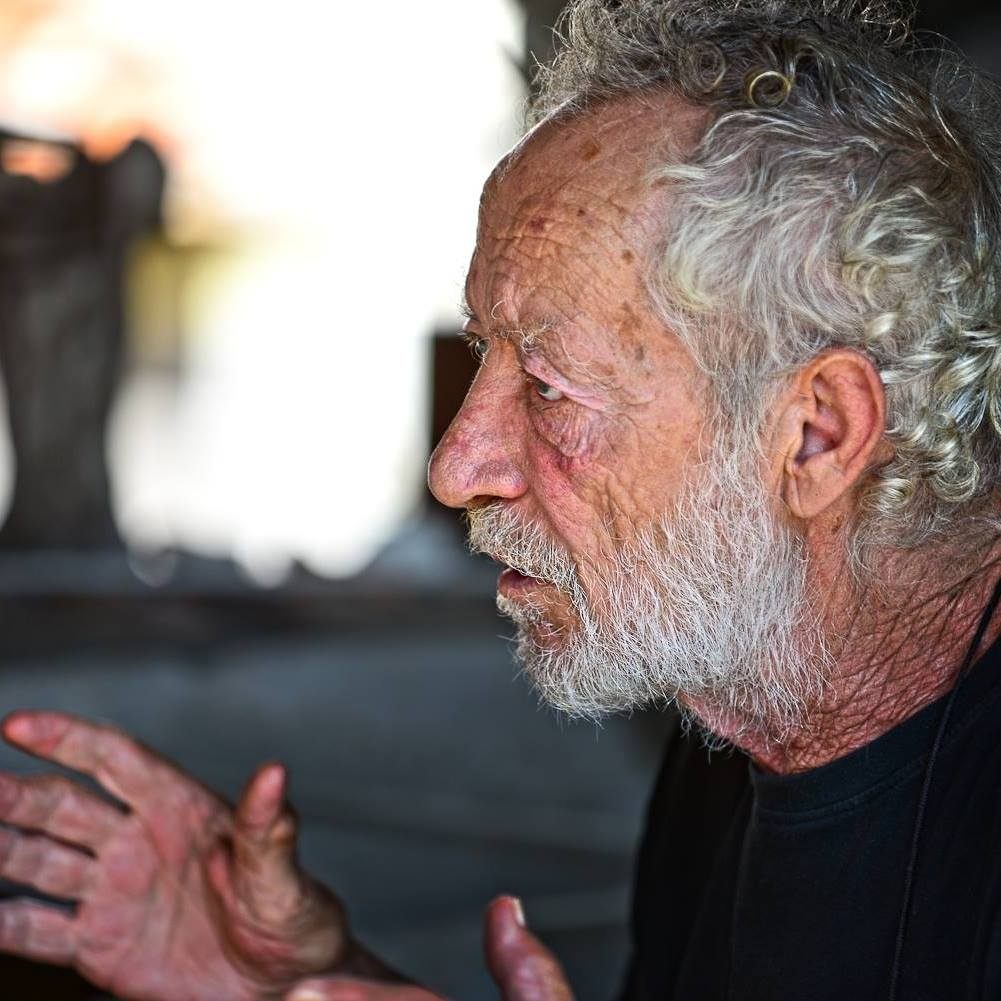
Before the dispute started, Morandi used to break his isolation twice a year to visit his daughters in central Italy. Because he was legally employed by the owner, he was assured of his return to his solar-fueled hut. In 2011, however, the island was put up for sale. That’s when his trouble started. Two years later it was purchased, only to be later taken over by the government and made part of a national park. “I now live in a state of uncertainty,” he says. “The island is owned by La Maddalena National Park and they could kick me out anytime.” Morandi has returned to the fold of Italy’s Kafkaesque bureaucracy—part of the reason he left on his sailboat in the first place.
He had none of these concerns in his first, idyllic winter on the island, in 1989. “At the time I hated people,” he says. “During winter I could finally enjoy the beauty of this island by myself.” Sometimes, during the cold season, sunlight shines in a way the reminds him of some his favorite paintings by German Romantic painter Caspar David Friedrich.
But winters can also be cruel, with punishing winds wreaking havoc on the few short shrubs that grow among the rocks. To Morandi, this harsh side of nature is part of its beauty. “My best memory here is a storm in 1991,” he recalls. On that occasion winds reached a speed of 104 knots—an intensity that hadn’t been seen in 200 years.
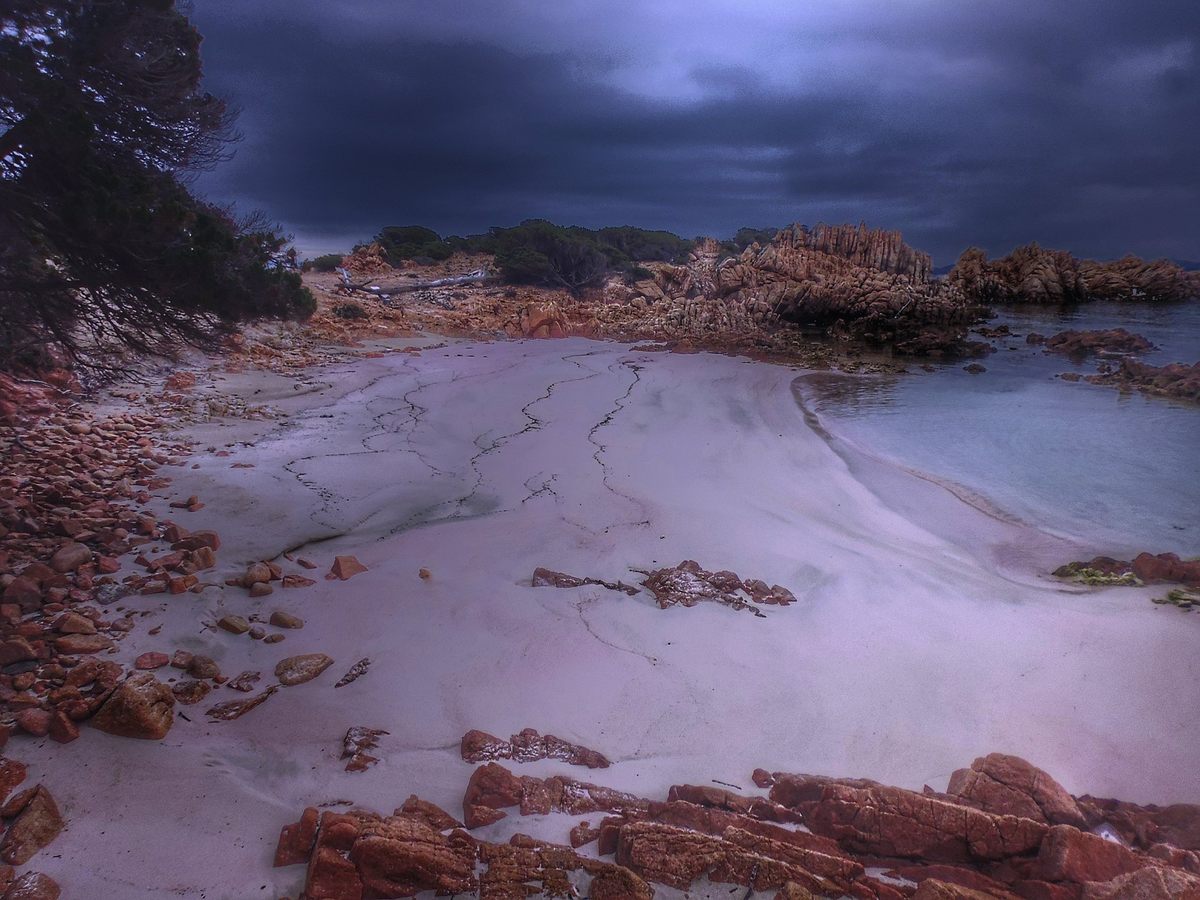
“The wind was so strong and made a howling sound that I have never heard before,” he says. Waves reached 18 feet and were breaking far beyond the beach. “I realized that humans are nothing against nature,” he says, with a taut voice. “Even with all of our technology, we are nothing but small ants.”
But technology did penetrate Morandi’s isolation over the years. Three years ago, a private company installed a wireless router nearby to provide a internet access to tourists visiting the park. “I did not even know what an iPad was,” he says, “but now I have accounts on Twitter, Facebook, and Instagram.”
Morandi’s primary creative outlet used to be crafting design objects out of juniper logs that washed on the beach. It has since been replaced by photography to fuel his social feeds. “I used to be more egoistic,” he admits. “But now I want to share this beauty with everyone around the world.” His social media output now reaches hundreds of thousands of people all over the world.
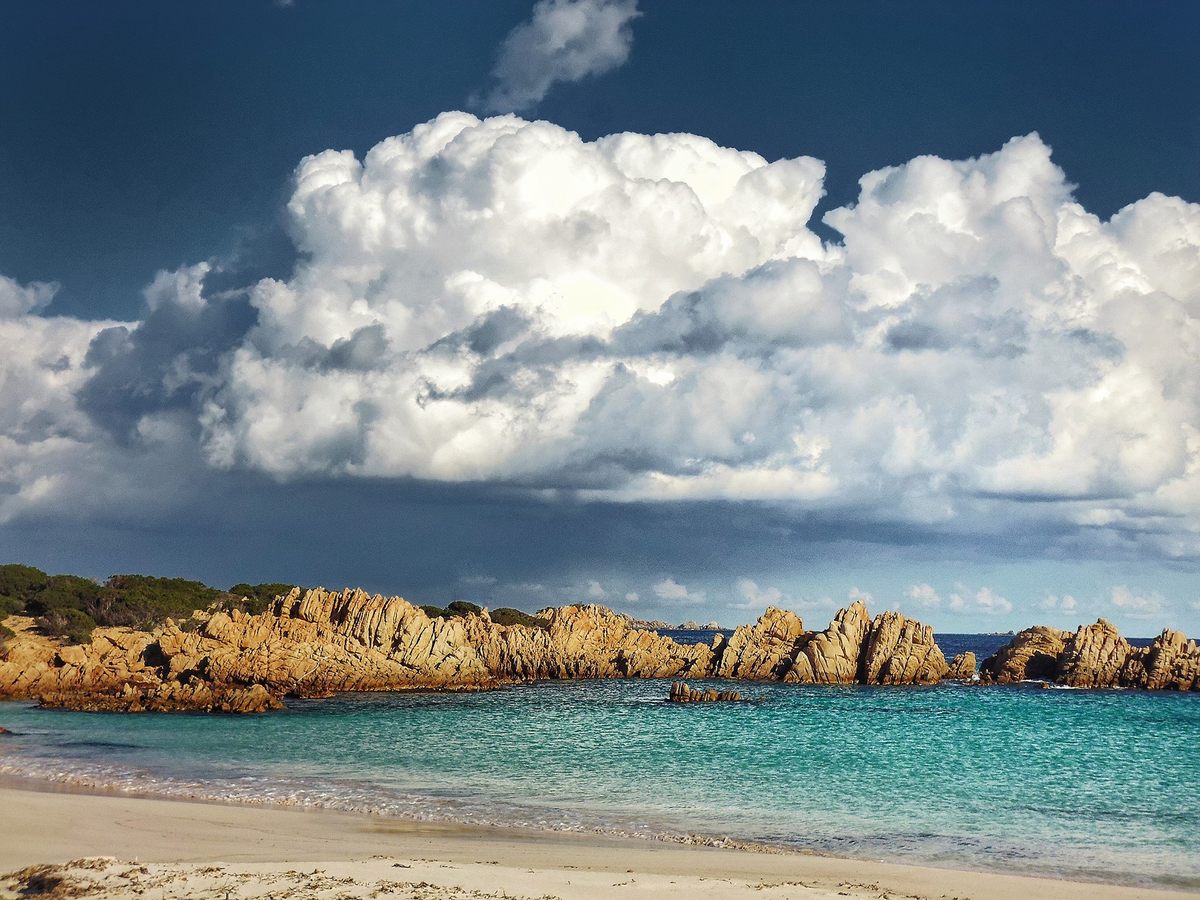
On a typical winter day, Morandi wakes up around 7:30 in the morning, makes some coffee, and begins the workday in and around his hut, from cutting up logs for heating to cleaning and cooking. After lunch, he wanders his personal paradise, taking photos of sandy beaches, rocky inlets, and the ever-changing Mediterranean sky. “I used to read a lot, mainly Mitteleuropean thinkers like Kant and Schopenhauer,” he says. “But now I mostly take photos and then go back to edit them.”
Friends on a nearby island come by every ten days to bring him groceries and supplies, but less frequently in the winter. “Friends come all the time during summer,” he says, at that moment 25 days from his last supply drop. “In winter, not so much. So tonight I am going to eat wild nettles sauteed with some butter.”
During fall, winter, and spring, he can forage for the wild herbs typical of the macchia, or the shrubland biome characteristic of the Mediterranean: wild beets, asparagus, garlic, rosemary, leeks. “Spring is when everything blossoms,” he says. “Starting from the end of February you get a strong scent of wild rosemary.” During the summer, the strong sunshine and stiff wind dries out everything apart from few evergreen shrubs such as rock roses and the occasional wild white lily. “Lillies have such as strong smell,” he says. “In the summer the evening breeze takes the scent right into my hut.”
Myrtle, from which local herbal digestive Mirto is made, are another sight. “Myrtle berries are usually harvested in fall, but this year it did not rain for 10 months straight, so there were very few berries.”

Morandi has seen, year on year, changes in his corner of the world. Last summer was an abnormally hot one, he says. “Temperatures reached 116 degrees in inland Sardinia and around 109 here in Budelli.” He has noticed fewer fish in the shallow waters around the island. “I spoke to some fishermen and they told me it’s because coastal water gets too hot so fish go deeper to look for cooler temperatures.”
Winds are changing, too. Usually, his part of the archipelago is swept by westerly winds, but now the breeze is coming from the other direction. “Easterly winds erode the beach,” he says. “You can already see the impact.” The storms have grown longer and stronger, too.
So during high season, when tourists visit the island by boat, Budelli’s caretaker spends his days talking to visitors about conservation. “In the summer my life changes completely,” he says. “I am busy lecturing and giving tours of the island from dawn to sunset.” Lectures take place in a separate small hut equipped with wooden benches and samples of rocks and corals. Sometimes, a friend translates his words into English. “Children are more receptive than adults,” he notes. “They like to hear this sort of Robinson Crusoe guy talking about nature.”
“I teach kids that nature is not something to be used,” Morandi says. “It’s something we need to to protect.” He is mainly referring to one of Budelli’s most famous and infamous features, its pink beach, one reason that some consider it one of the most beautiful islands in the world.

Famously featured in Michelangelo Antonioni’s 1976 film Red Desert, the pink beach, or spiaggia rosa, owes its color to a distinctive blend of crystals, fossils, and corals such as Miriapora truncata and Miniacina miniacea.
When Sardinia and its surrounding archipelagos became an emerging tourist destination during the 1980s, masses of tourists flowed to Budelli to see its famous spiaggia rosa, and many took handfuls of the sand home with them. By 1994, this practice was taking a toll. The beach turned whitish, and soon tourists were no longer allowed to set foot on it. Part of Morandi’s job became to enforce the ban. “In the past three or four years the pink started to come back,” he says. But now he is worried that he won’t be there to see the beach return completely to its former glory.
After Budelli was put up for auction in 2011 following the bankruptcy of the property firm that owned it, it was eventually sold to Michael Harte, a banker from New Zealand, who allegedly wanted to convert it into biological preserve with an eco-resort. The plan did not go over well with local authorities. The dispute went on for years, during which time Morandi did not hide his support for Harte. “I know perfectly well that things run by the government do not work,” he explains, “while this guy, Michael Harte, had already done eco-reserves in New Zealand.”
In 2016, Harte withdrew his proposal and the island officially became Italian property. Morandi thinks that his open support for Harte put him in a bad light with authorities. “I was sure they would have tried to kick me out,” he says. Indeed, about a year ago, he received a notice of eviction due to some irregularities with the way his hut was built prior to his arrival on the island. “But I know how long these kind of legal matters take,” he says. “I am not going anywhere.”

Currently, the national park has nominated a new president, who may change his view over the caretaker’s right to stay. In the meantime, the man who has spent most of his adult life living there, and some of his followers, have started petitions to support his right to live there. One was titled, “I would like that Mauro Morandi, former caretaker of Budelli, could stop living in terror.”
He doesn’t really find “terror” an apt description of his current situation. “I am not afraid,” he says. “I am used to living in uncertainty.” The first owner of the island apparently had stopped paying him after five years, so he has faced the prospect of leaving—for financial reasons, in that case—before. But this time is different, in part because the freedom he had once so coveted there is now twisted in on itself. “I could always leave and come back before,” he says. “Now, I depend on people to come here.”




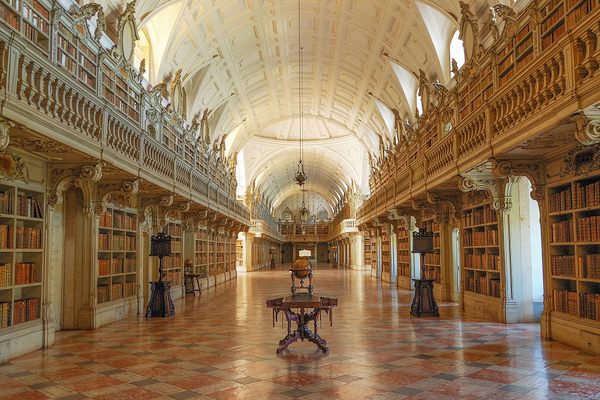

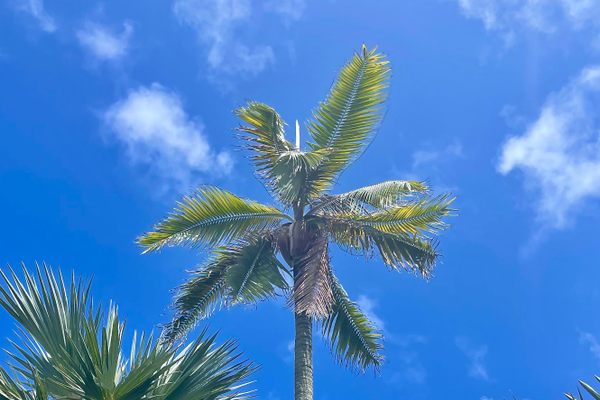
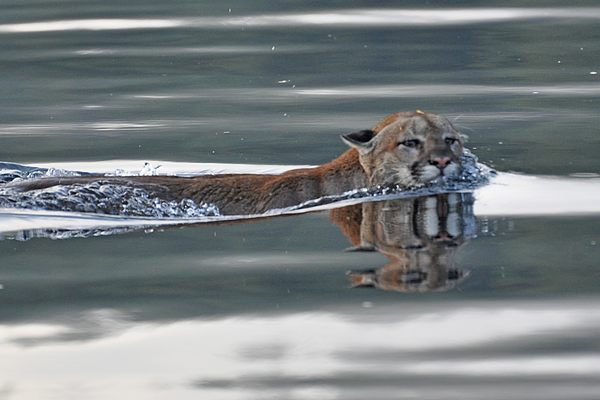
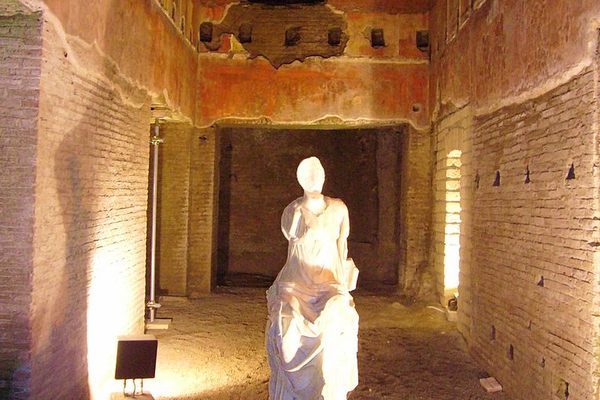










Follow us on Twitter to get the latest on the world's hidden wonders.
Like us on Facebook to get the latest on the world's hidden wonders.
Follow us on Twitter Like us on Facebook